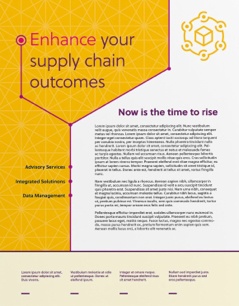"Efficiency is doing better what is already being done. Effectiveness is deciding what to do better." - Peter F. Drucker
In this day and age, every industry needs to be more efficient. In healthcare, it is a must. We not only have to do things differently, but we must also measure and evaluate what we are doing. One thing is certain: Building a proper list of key goals and objectives is critical to ensure success.
A great way to achieve this is by using key performance indicators (KPI). KPIs have been used in other industries for decades. KPIs are used to track and manage specific areas of business that are identified as critical in nature. In healthcare, we have been using them to measure key areas such as patient outcomes, insurance reimbursement rates, and so on. Now for a bit of evolution …
With a point-of-use (POU) solution in place, we now have data in areas we never were able to measure before. New KPIs can be developed to further measure and used to improve the business. POU gives us a great deal more information on the performance of the supply chain within the hospital (and even outside of it). We can also look at other areas of the hospital that are directly (e.g., clinical time available to patients) and indirectly (e.g., patient satisfaction rates) in ways we previously could not.
The supply chain is critical to the financial health of the hospital. Millions of dollars flow through the supply chain. Fully understanding the spend can be the difference between red and black ink on financial statements. We must do more and manage more while often given fewer and fewer resources in the process. Something has to give.
Additionally, we must not only have a better understanding of our supply chain, we must also have a very clear vision of how inventory is managed day-to-day. From patient slippers to medical devices, everything must be accounted for. Furthermore, inventory must be managed efficiently from ordering and delivery to stocked shelves to patient rooms. It must be repeatable and automatic.
No one else knows this more than the clinical staff at the hospital. Nothing can be more frustrating than needing a product for a patient only to find the product is not on the shelf. When that happens, clinical staff may have to delay or cancel and reschedule a procedure. Improving the inventory management practices helps get clinicians out of the inventory business and back to spending more time with patients, which is where they want to be. The result of this can be happier clinicians, which create happier patients. Happier patients lead to a more profitable bottom line.
So, how do we get there? Certainly, implementing a point-of-use solution successfully is the first step. The next step would be to define and execute a KPI program including the newly available data that is derived from the POU solution. Building out and managing the KPIs will have a direct, positive impact not only on supply chain staff, but also the clinicians, finances, and even patients. There are a number of KPIs that can be valuable. The more obvious ones are: inventory on hand, record accuracy, obsolete inventory, item availability, expired product, recalled product, lost inventory, and turnover.
There are other KPIs to consider in point of use. Clinical KPIs include: cost per procedure, tracking supply cost per case by physician, percent of claim lines paid, clinical bedside time, readmission rate, patient satisfaction, claims denial rate, patient complaints resolution rate, and revenue per physician.
Building a strong set of KPIs is critical to the success of any hospital. With POU, we can also add inventory management to the mix. The benefits of implementing KPI-driven standards and monitoring far outweigh the negative side effects of ignoring the problem.
Look for our follow-up article. We will discuss the new KPIs that can be used, what makes these new KPIs effective, and how they can be tracked as part of a successful KPI project.
To learn more about how well-developed KPIs across your health system can improve your return on investment, contact us 913-906-7000.





